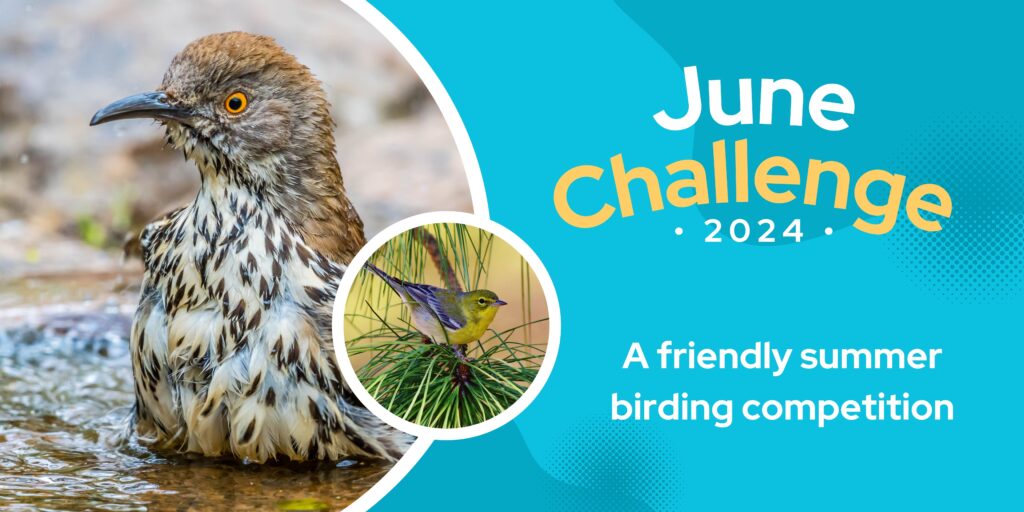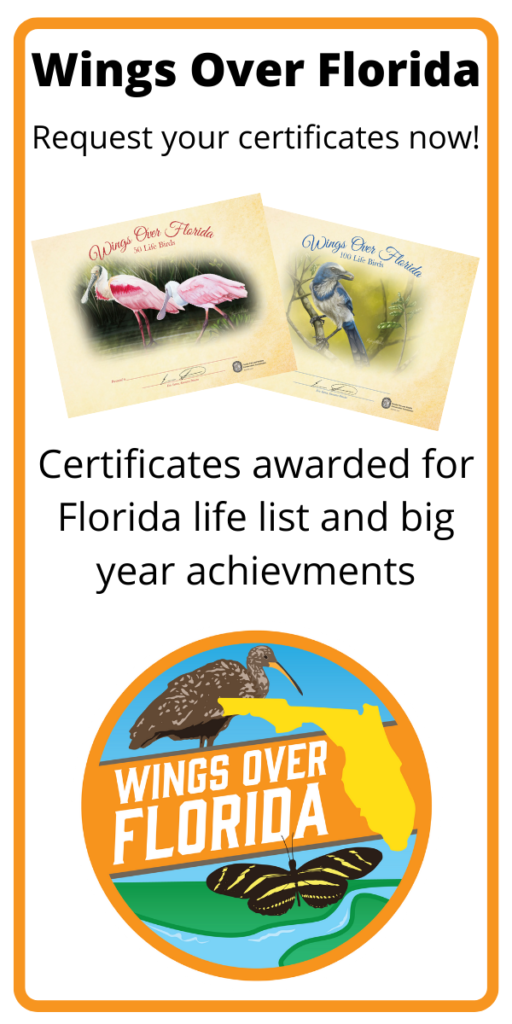The June Challenge is a friendly competition designed to keep us birding through the summer heat while non-birders retreat indoors and miss all the fun. The aim of the competition is for individual contestants to see as many bird species as possible within the boundaries of their county between June 1st and June 30th.
Rules
- Count only birds found within a single county, ideally the one you live in. Explore your home turf and find some new birding spots. (Doing more than one county is permissible, but each must be reported separately.)
- Each bird on your list must be seen, not just heard. There have been complaints in the past about the no-heard-birds rule. The most substantial objection involved the possibility that secretive birds would be harassed until they came into view. Please don’t do that. Respect the birds. Use tapes judiciously and avoid harassment. Rely on patience and birding skill. If you haven’t read the ABA’s Code of Ethics it might be a good idea to.
- You’ll be competing with birders in your own county to see who can amass the longest individual list, but let the others know if you find something good so they can go out and look for it. This is a friendly competition. (A word about the individual competition. Some birders don’t like it, but it’s crucial to the Challenge. Counties with spirited competition make the most exciting discoveries, because the birders are always out looking for something new to beat their competitors. So the competition is both beside the point and absolutely essential.
- Any free-flying bird is countable for the purposes of the Challenge, but keep track of how many ABA-countable and non-countable species are on your list. Your count number will be displayed as two numbers: the total ABA countable seen, followed by the number of non-countable species seen. Rankings will be based on the first number, the ABA-countable species and the tie breaker is the non-ABA observations. No captive, released, or escaped captives count for either list.
History
The June Challenge as we know it, originated in Alachua County in 2004. It was created by Becky Enneis as a way to motivate people to get outside in the summer, when people often shun outdoor activities and opt for the comfort of A/C. Read more about the history here.
Need a Checklist?
Download a Florida list from FOS or order a free physical bird checklist booklet from the FWC publication ordering page.
Submit Your List
Once you have finalized your list go here to enter what you observed. You can just enter the number of birds you saw or fill out the checklist. The form you will fill out has bird species listed in taxonomic order, just like the FOS list. The deadline for submission is July 7 this year.

